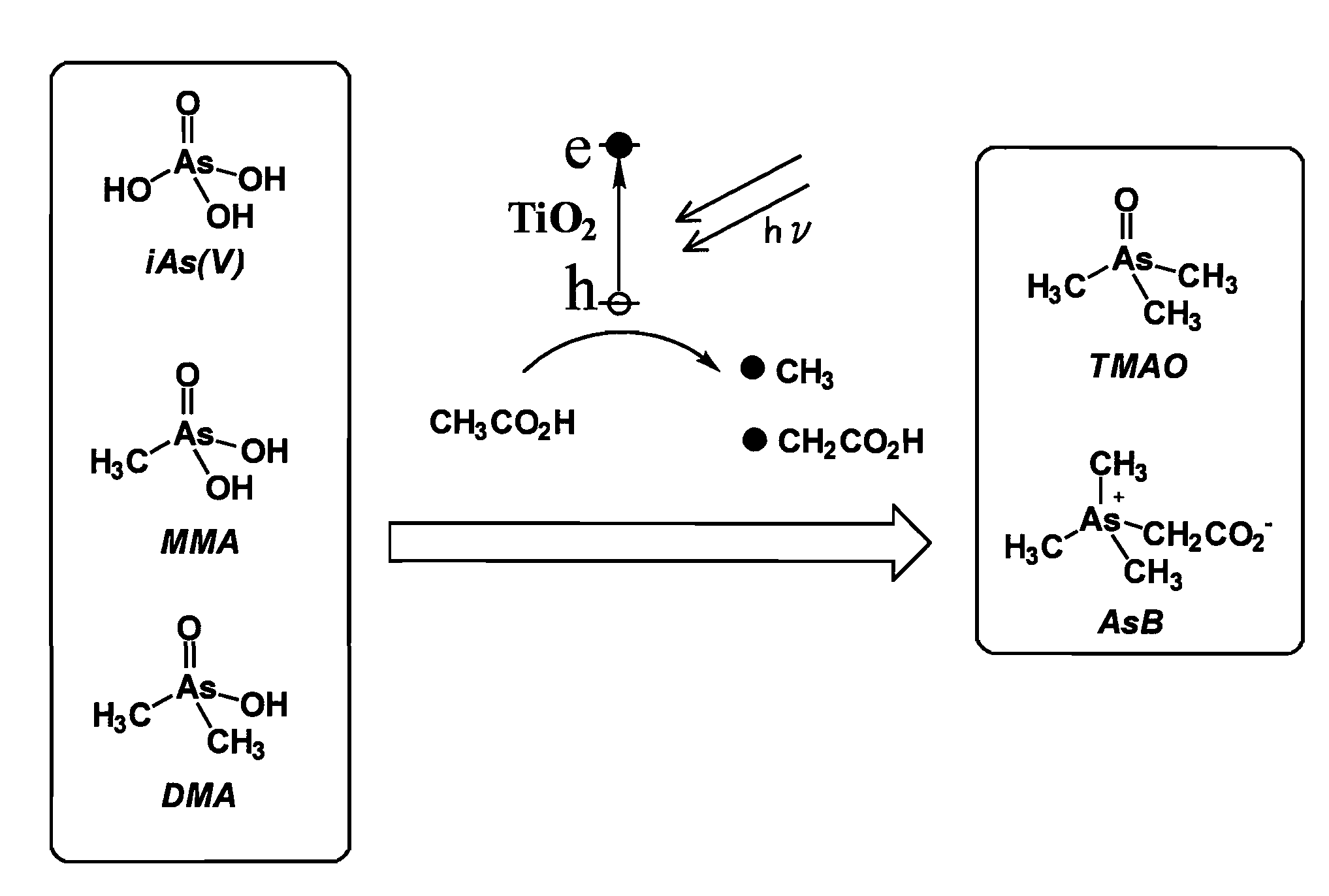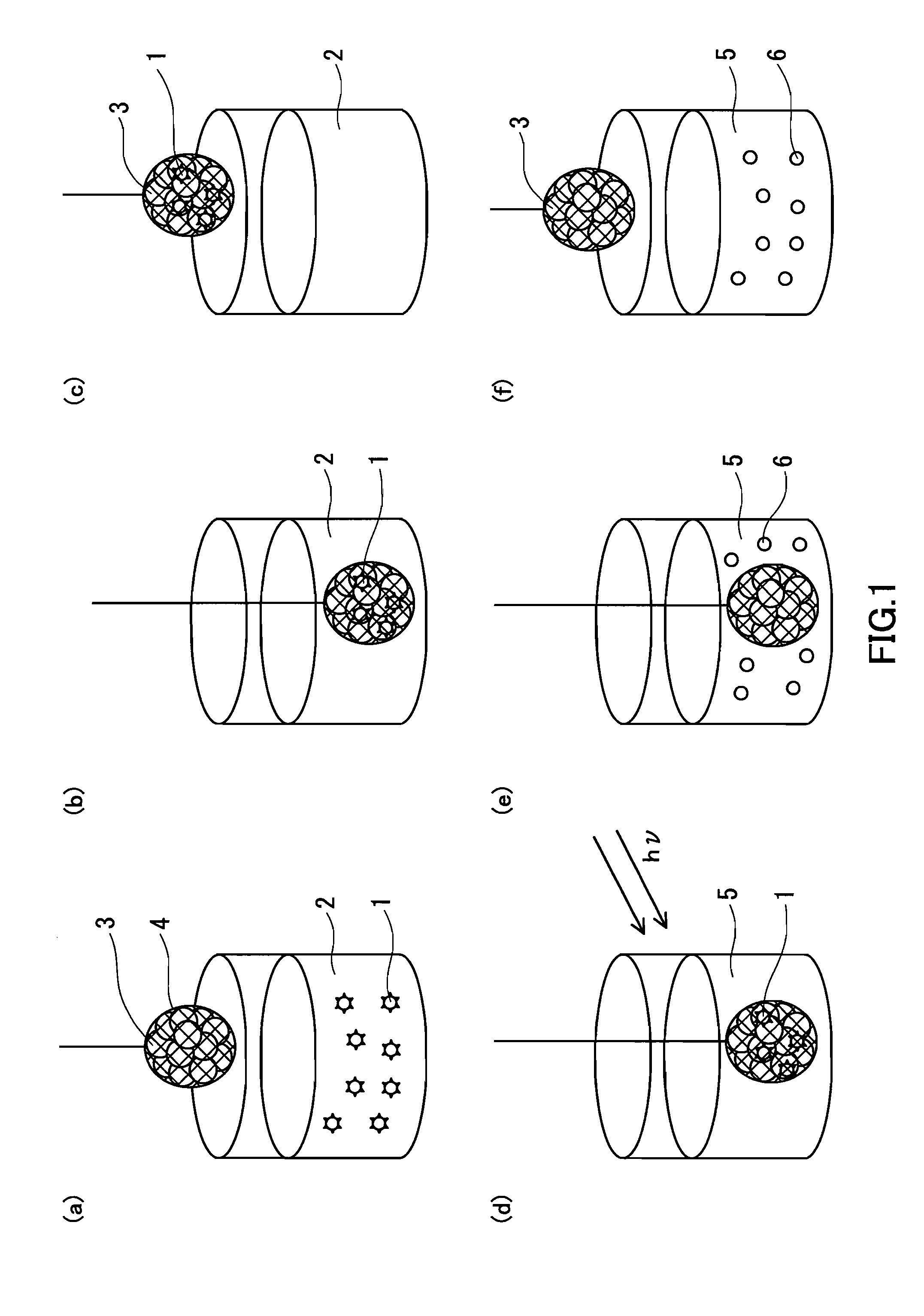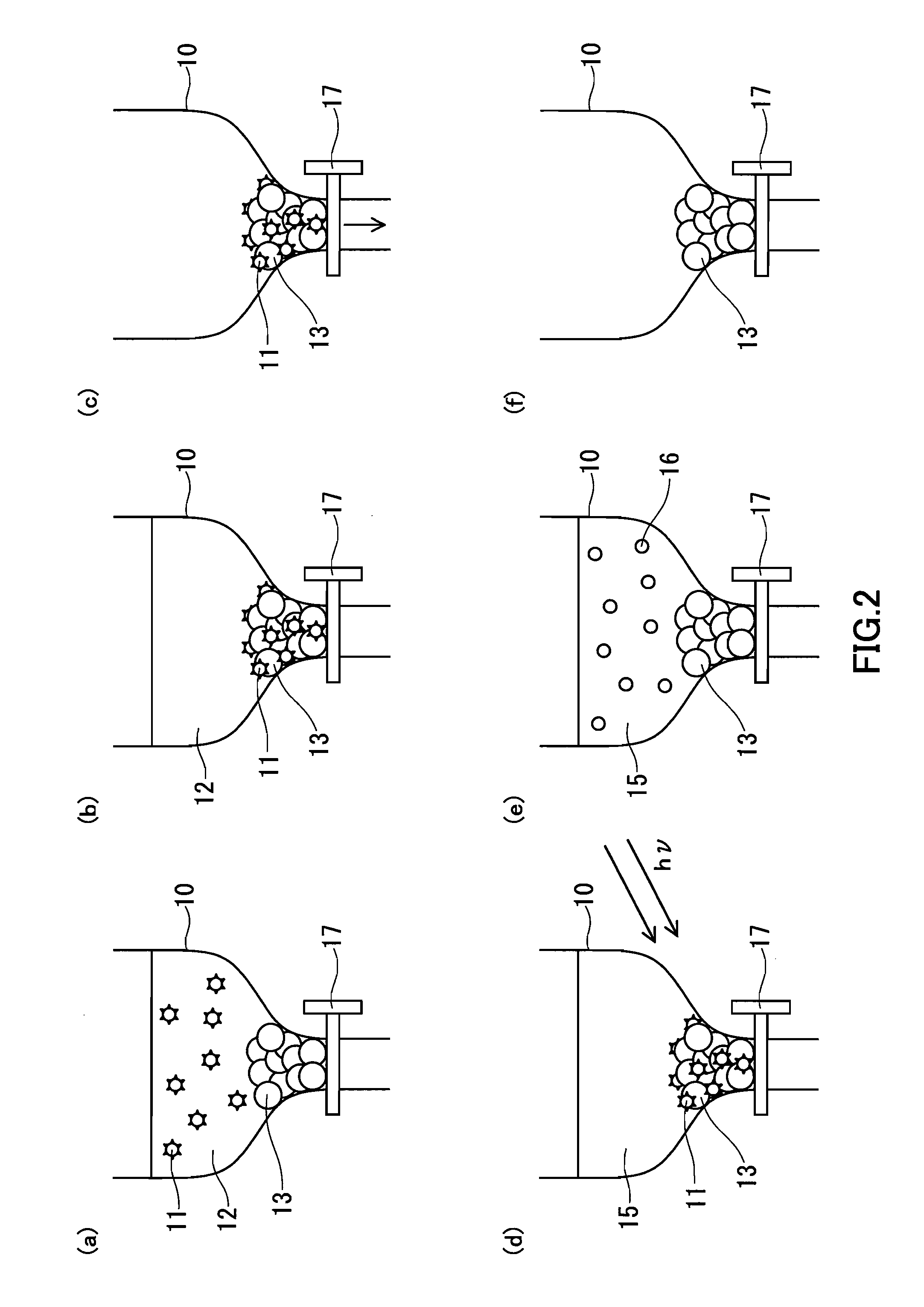Method of treating treatment object containing harmful compound
a treatment object and harmful compound technology, applied in water/sewage multi-stage treatment, water/sewage treatment by oxidation, separation process, etc., can solve the problems of no known feasible treatment method that meets the need, health risks associated with organic arsenic compounds, and the safety of drinking water contaminated with dimethylarsonic acid leached from the soil
- Summary
- Abstract
- Description
- Claims
- Application Information
AI Technical Summary
Benefits of technology
Problems solved by technology
Method used
Image
Examples
Embodiment Construction
[0018]The present inventor has conducted studies focusing on the difference between the affinity of a toxic harmful compound for the surface of titanium oxide and the affinity of a detoxified compound for the surface of titanium oxide, and as a result, has accomplished the present invention. Hereinafter, embodiments of the present invention are described taking arsenic compounds as examples.
[0019]Not only highly toxic inorganic arsenic compounds such as arsenious acid and arsenic acid but also low toxic organic arsenic compounds such as monomethylarsonic acid (MMA) and dimethylarsonic acid (DMA) contain a hydroxyl group(s). In contrast, non-toxic organic arsenic compounds such as trimethylarsonic acid (TMAO) and arsenobetaine (AsB) contain no hydroxyl group. On the other hand, hydroxyl groups represented by Ti—OH are also present on the surface of titanium oxide. Therefore, toxic arsenic compounds have higher affinity for the surface of titanium oxide than non-toxic arsenic compound...
PUM
| Property | Measurement | Unit |
|---|---|---|
| light energy | aaaaa | aaaaa |
| light energy | aaaaa | aaaaa |
| light energy | aaaaa | aaaaa |
Abstract
Description
Claims
Application Information
 Login to View More
Login to View More - R&D
- Intellectual Property
- Life Sciences
- Materials
- Tech Scout
- Unparalleled Data Quality
- Higher Quality Content
- 60% Fewer Hallucinations
Browse by: Latest US Patents, China's latest patents, Technical Efficacy Thesaurus, Application Domain, Technology Topic, Popular Technical Reports.
© 2025 PatSnap. All rights reserved.Legal|Privacy policy|Modern Slavery Act Transparency Statement|Sitemap|About US| Contact US: help@patsnap.com



